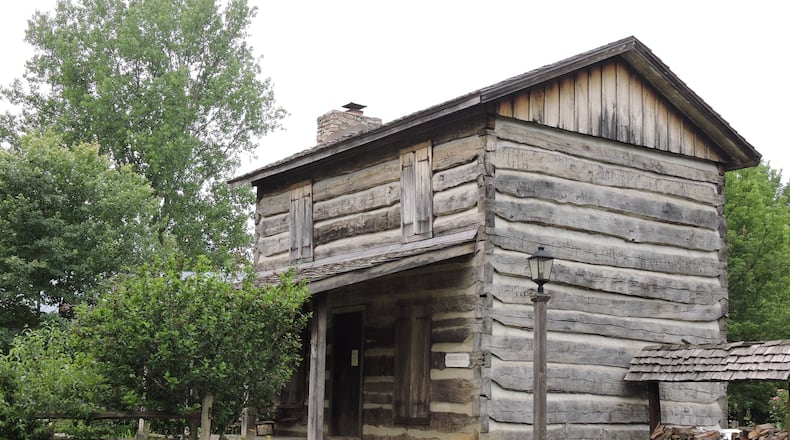1. Beavercreek Twp. was founded in 1803. The "associate judges of Greene County" met in a log house on the banks of Beaver Creek on May 10, 1803, to set four townships in the county: "Beaver Creek," "Sugarcreek," "Caesarscreek" and "Mad River," according to the 1918 book, "History of Greene County Ohio." Four years later, the southern half of Beavercreek Twp. became Bath Twp., and Beavercreek Twp. was later divided further.
2. One of the oldest structures in the area was discovered by accident. The Philip Harshman House, believed to have been built between 1803 and 1807, was discovered in 1985 when workers removed wood siding on a home slated for demolition and discovered the original log house, according to the Beavercreek Historical Society. It stood just south of St. Luke Catholic Church on North Fairfield Road. It was later moved to Wartinger Park, 3080 Kemp Rd.
3. The first high school building opened in 1888. According to the Beavercreek Historical Society, the high school on the southwest corner of Factory Road and Dayton-Xenia Road was just the second in the state. Its demise came when, as a restaurant named LaMachey's filled the building, it was significantly damaged by a fire, and it was torn down. A Ritter's Frozen Custard is now on the spot.
4. The fire department serving the city was started by a florist. John Scott, who owned Knollwood Florist, used a panel truck, fire extinguishers, shovels and rakes to fight fires in the area beginning in 1941. A call to the Knollwood greenhouse was, in effect, a call to the fire department that served Beavercreek. A bond issue passed in 1945 that established the Beavercreek Twp. Fire Department, which continues to serve the city. Scott was later named fire chief.
5. Becoming a city was like ‘founding of the nation.’ So found David Shumway, a former Wright-Patterson Air Force Base employee who later wrote a history of Beavercreek, “Birth of a City.” Here’s how Shumway described it: “There were battles and infighting similar to those at the U.S. Constitutional Convention, and it took about the same amount of time. There were interminable lawsuits, it tired out judges and went to the Ohio Supreme Court twice. Dayton and Kettering kept fighting us, and Fairborn was encroaching on the township. I became an expert on the Ohio Revised Code. Efforts started in 1962 or ’63, and Beavercreek didn’t become a city until 1980.”
About the Author

